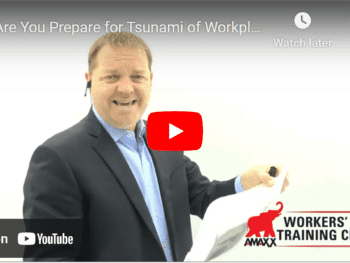
Companies that engage in ERM have a strong competitive advantage. It gives all stakeholders the confidence that the management team is applying a structured approach to identifying, assessing, and managing the company’s most important risk. It makes a clear statement to the value of appropriate allocation of resources and efficiency in governance.
Click Link to Access Free PDF Download
“The 5Cs to Taking a Bulletproof Injured Worker Recorded Statement”
With the clear value ERM brings, why are so many companies missing the opportunity? Why do they recognize the value but struggle to get their programs up and running? Our research and experience shows:
1 They make it more complex than it needs to be
2 They spend too much time prepping and not enough time doing
3 They miss opportunities when it comes to technology
We recommend simplifying foundational concepts, streamlining the process into immediate action and using technology to get your program off the ground.
Make it Simple
Most have heard the terms and concepts of ERM, but do not have the time to get their arms around them. To successfully get off the ground and make progress, the first step needs to be — MAKE IT SIMPLE. Not just initially but for the long haul. Peers at an executive level need to be able to be on the same page and the message to process owners needs to be clear. If it is not simple and clear you will waste count- less hours with no real value.
A best practice ERM framework simply means your company has an efficient and effective way to collect risk across the enterprise, a way to quantify risk across business silos and a way to put what is most important into action.
If your employees are not aware you have an ERM initiative, you don’t have one. Foundational to the process is identifying what the team looks like that makes up your 3 lines of defense; defining roles, clearly/concisely communicating the core concepts and engaging stakeholders to be part of the process.
Moving forward, we recommend finding simple and efficient ways to capture the team’s perspective on risk. Keep the questions straightforward and use technology to gather data in a way that is easy for them. Use simple questions like, what could hinder their success in reaching objectives, what risk they have encountered over the last year, what they heard or observed from others and what is happening externally—in industry, among competitors, regulators, etc.?
The next step of the equation is putting time into dealing with governance obstacles. Things start to slow down when “simple” is not applied to the long haul. Look for opportunities to identify obstacles and apply efficiency.
Just Get Started
As companies are attempting to get their ERM programs up and running, they mistakenly think it must be perfectly mapped out before steps can be taken. This, unfortunately, pro- motes the idea of long drawn out committees with no value being realized for upwards of 2 years down the road.
Take steps that build long term success, while in tandem, build in steps to capture immediate value. Many companies take too long to capture their top risk and even longer to translate it into action. While the framework is taking shape and you’re capturing and organizing your top risk, jump ahead of the process, and put key risk you know will likely end up as a top 10 cate- gory into an ERM Plan. This will be time well spent to pilot a repeatable process to consistently assess, mitigate and monitor risk that will be transferable to other risk plans.
Begin with Technology
Unfortunately, some companies get started on an ERM initiative and end up putting their efforts on the shelf. This is a natural outcome of not simplifying and getting started (streamlining the process). Avoid wasted time and efforts by using technology early.
Many companies mistakenly think ERM technology comes into play after a mature program is in place. They do not take advantage of tools that can streamline the educational process, allow for efficient platforms to collect data, transition risk into structured plans and transition obstacles into governance efficiency.
ERM Checklist
- Do staff/process owners know you are focusing on ERM and are they engaged?
- Is there consistent and effective reporting on risks and controls?
- Are you putting efforts into keeping it simple
- Can cross-silo’d decisions be made from your assessment scale?
- Do you have an easy way to capture risk?
- Is there structured focus on governance efficiency?
- Are your most important risks getting transitioned into action?












Very Interesting article on enterprise risk management. Thanks Mark for sharing these 3 common mistakes to avoid for effective enterprise risk management. I loved reading your article & It was very helpful.